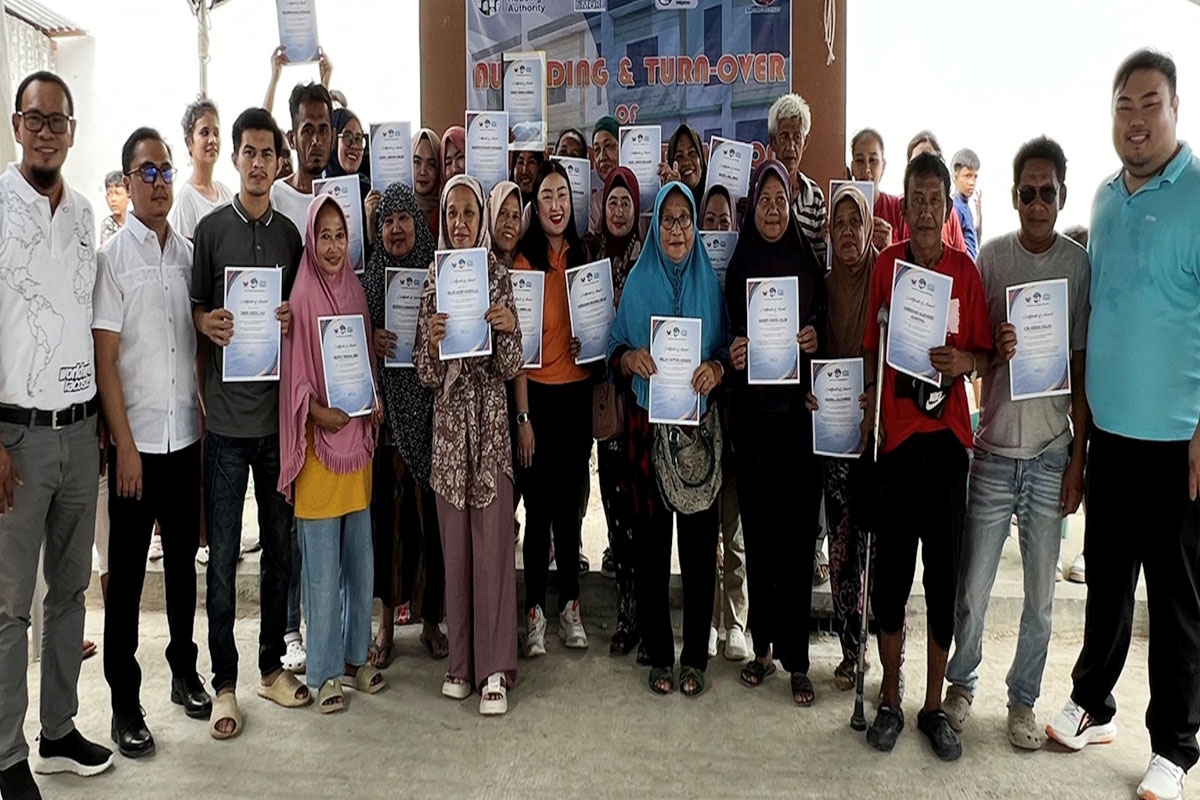
Villafuerte backs PCA plan to plant 8.5-M seedlings
In Marcos plan to revive PH as No. 1 coconut exporter
CAMARINES Sur Rep. LRay Villafuerte has backed a plan by the Philippine Coconut Authority (PCA) to plant some 8.5 million seedlings this year alone in support of President Marcos’ goal of planting 100 million trees by 2028 as part of his rehabilitation program for this sector.
A former Camarines Sur governor, Villafuerte expressed his support for the President’s goal for the Philippines to become the world’s biggest coconut exporter as he stressed “the vital role that local government units (LGUs) in coconut-producing provinces can perform in transforming the PCA’s ambitious planting and replanting project into a vehicle for reviving this once booming sector as the world’s No. 1 exporter of coconut products.”
For Villafuerte, “The all-out support of LGUs in coconut-producing localities behind the PCA’s development and rehabilitation plan is crucial to re-energizing this previously flourishing sector and lifting from poverty our coconut farmers, in step with the President’s ‘walang maiiwanan’ commitment not to leave any Filipino behind in his vision for a peaceful and prosperous nation.”
He wants the PCA to accelerate its plan to enter into Memorandums of Agreement (MOAs) with LGUs of coconut-producing provinces and municipalities meant to encourage these local governments to implement in their respective localities activities on planting and replanting, seed farm development and coconut fertilization, among other initiatives.
Villafuerte, National Unity Party (NUP) president, noted that an overwhelming majority of our 2.5 million coconut farmers, representing a sizable part of our farm population, are already living below the poverty threshold, and many more will join them there in the years ahead without any hope of deliverance—unless the Marcos government makes good on its PCA program to reverse in the long term the economic slump hounding this once formidable export sector.”
According to PCA administrator Bernie Cruz, at least 8.5 million coconut seedlings are to be planted this year under the agency’s Massive Coconut Planting and Replanting Project, in keeping with the President’s target of having 100 million new trees before he leaves office four years’ from now.
Cruz said that such a number of seedlings for planting this year are based on the available stocks and seed nuts presently sown in nurseries, which the PCA had amassed in partnerships with various cooperatives, farmers’ organizations and LGUs like those in CamSur, Eastern Samar and Leyte.
The PCA chief was quoted in the media as saying that: ““We made use of remaining funds from previous years to partner with supportive LGUs and cooperatives to establish nurseries and expand our sources of planting materials, in compliance with the President’s directives. We are also maximizing our resources and stepping up our efforts in our regular planting programs.”
Mr. Marcos affirmed last October his government’s commitment to the massive planting and replanting project, which the PCA is undertaking with LGUs, farmers’ groups and cooperatives to deal with the increasing senility and loss of bearing coconut trees.
The President had ordered the PCA to craft a rehabilitation plan for the coconut industry, including the planting of 100 million trees by 2028, so the Philippines could become anew the world’s biggest coconut exporter.
“There is no reason why the Philippines should not be the biggest producer of export in terms of coconut products,” he said.
Villafuerte pointed out that a massive replanting program using hybrid varieties and giving farmers easier access to already available production technologies will easily double per-tree yields, thereby significantly boosting domestic production and increasing the income of our coconut farmers.
As of 2019, about 90% of coconut farmers lived below the annual poverty threshold of P125,775; and a majority of these tillers listed in the National Coconut Farmers Registry are food insecure and without social protection.
Filipino coconut farmers are getting poorer, because our per-tree productivity has been on a downtrend from 46 nuts per tree per year in 2009 to 44 in 2019—as against 80 to 100 nuts in India and Indonesia.
Villafuerte said coconut productivity is even worse in CamSur, where, because of the big number of old or senile trees there, the current annual yield average is a lower 34 nuts per tree.
Even without replacing the standing trees, he said that giving farmers access to already existing technologies to raise output and to inputs like fertilizer will already improve their yields, given that our yield average of 44 nuts per tree represents just 50% of the potential yield of the native tall variety and 30% of local hybrid varieties.
The Philippine Statistics Authority (PSA) has reported an output decline from 15.86 million metric tons (MT) of coconuts in 2012 to an annual average of 14 million MT in the past three years—resulting to the Philippines being overtaken lately as the world’s top coconut producer by Indonesia and India, which respectively produced 17.1 million MT and 15.7 million MT in 2021 (as against the Philippines’ 14.7-million MT output that year).
Despite the falling harvests, though, the Philippines still managed to export $3.22 billion-worth of coconut products in 2022.
Villafuerte proposed that apart from this plan to replant with higher-yielding varieties, other intervention programs must be undertaken by the PCA, including the promotion of modern farming technologies, provision of access to processing facilities and marketing outlets for exports of value-added products, and farmers’ income augmentation via multi-cropping and animal-raising in their lands.
He said the PCA’s five-year rehabilitation plan seeks to reverse declining coconut production, which the agency has traced to the prevalence of senile or old trees that produce less and less nuts each year, destruction of coconut lands caused by increasing devastating typhoons, the other negative effects of climate change, pests and diseases, and softening global demand amid competition from palm oil.
As for pest infestations, Villafuerte pointed in particular to the coconut scale insect (CSI) or cocolisap, which feeds on the leaves, fruits and flowers—leaving only the trunk that can merely be used and sold as coco lumber.
Villafuerte said the last time that the government had carried out a massive replanting program like the one the PCA wants to implement now was in the 1970s, when Mr. Marcos’ father, the late Ferdinand Marcos Sr., was President.
The Philippines has an aggregate coconut area of 3.6 million hectares (ha), or almost a third of our country’s total agricultural land, with a combined 340.6 million coconut-bearing trees in 2022 that can produce 14 to 15 billion nuts each year.
This showed a decline in the total number of nut-bearing trees from 346.8 million the previous year, the PSA has reported.
According to the PCA, our mostly ageing coconut trees produce an average yield of 44 nuts per year. In contrast, the dwarf open pollinated varieties can produce 80 to 100 nuts, while the hybrid varieties can bear 100 to 140 nuts each tree.
Villafuerte suggested an aggressive government effort to help farmers process and improve their products, “so they can cash-in on the ever-growing global trend on a healthy or ‘green’ lifestyle by way of an aggressive promotion and marketing strategy, with focus on the medicinal, nutritional and therapeutic value of our processed coconut products.”
This can be achieved through more and better intervention programs, he said, designed to facilitate the processing of our coconuts into value-added products like virgin coconut oil (VCO), upgrading the quality of such healthier products to world-class standards, and promoting and selling them in overseas markets.
Villafuerte said that in CamSur, for instance, investors are most welcome to partner with local entrepreneurs in the processing and export of high-value coconut products.


















